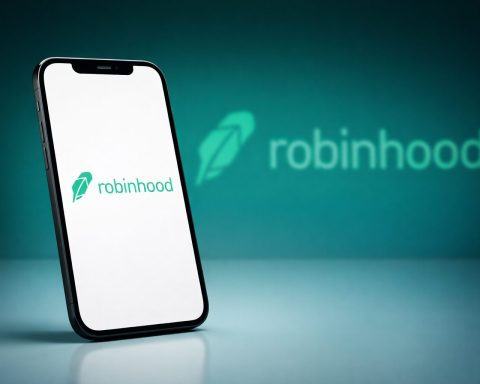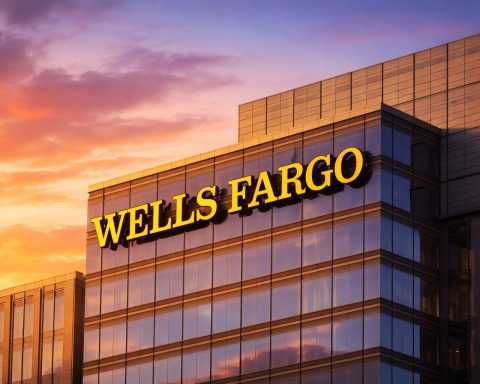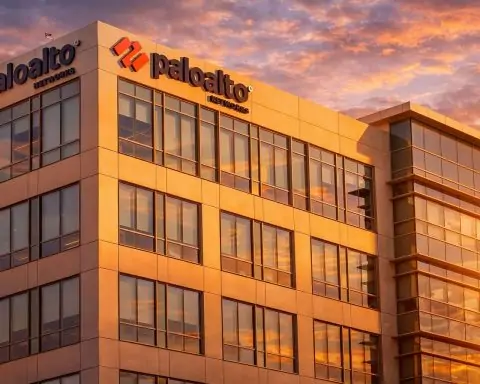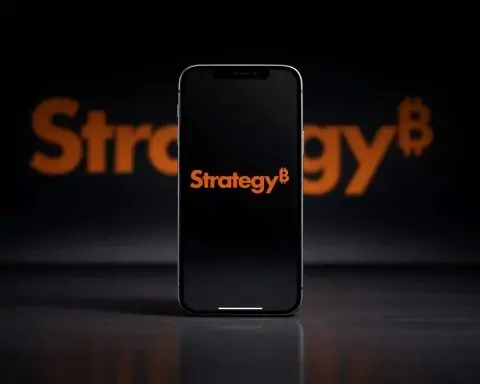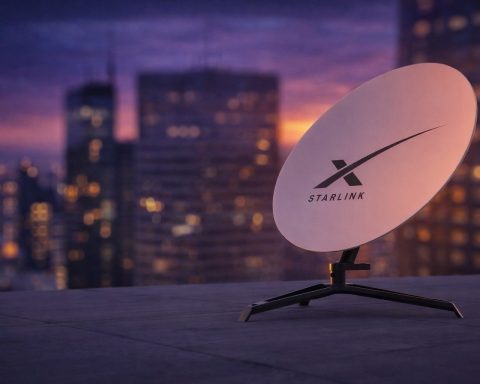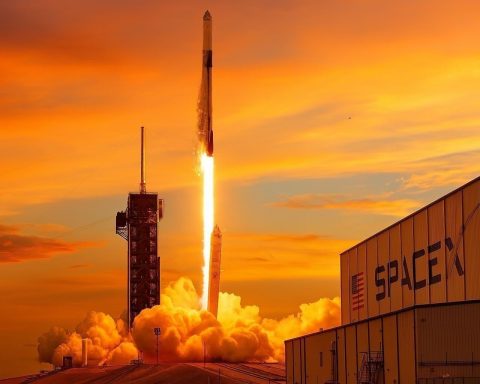- As of Q4 2024, Jordan had about 812,000 fixed broadband subscriptions, with fiber representing roughly 73% (about 591,000) of fixed lines and total fixed broadband at 33.4% household penetration.
- Mobile broadband reached 8.0 million subscriptions in Q4 2024, with 4G LTE coverage exceeding 90% of the population and 5G launched commercially in 2023, tallying 112,900 5G subscriptions by end-2024.
- SpaceX Starlink became live in Jordan in April 2025, making Jordan one of the first Middle Eastern countries to offer land-based satellite internet.
- Orange Jordan introduced satellite broadband via the Eutelsat Konnect satellite in April 2025, delivering up to 100 Mbps download for remote homes and businesses.
- Internet penetration was about 91% of the population by early 2024, with over 10 million Jordanians online.
- Three operators—Orange Jordan, Zain Jordan, and Umniah—control most consumer internet services, with Zain leading mobile subscriptions at roughly 40%, and Orange and Umniah around 30% each; Orange dominates fixed broadband with an estimated 80–90% share.
- 5G subscriptions surged to 112,900 by end-2024, after commercial launches in 2023, with plans to cover 75% of the population by 2026.
- Average fixed broadband download speed reached about 142 Mbps in March 2024 (33rd globally, 4th in the Arab world); by January 2025, crowdsourced data put it at about 163 Mbps.
- The mobile median download speed was about 26 Mbps in May 2024, with 4G typical speeds of 20–30 Mbps and 5G capable of well over 100 Mbps in covered areas.
- Regulatory and policy shifts include the PDPL data protection law enacted in 2023 (effective 2024), the 2023 Cybercrime Law, TRC 5G spectrum and wholesale access measures, and the Digital Inclusion Policy 2025 aimed at closing urban–rural gaps and expanding affordable access.
Jordan has emerged as one of the Middle East’s more connected nations, with over 90% of its population now online [1]. Driven by ambitious digital strategies and telecom sector investments, the country’s internet infrastructure spans modern fiber-optic networks, widespread mobile broadband, and new satellite services like Starlink. This report provides a comprehensive overview of internet access in Jordan as of 2025 – from the dominance of fiber in fixed broadband to the rollout of 5G and the arrival of LEO satellite internet. It examines the major service providers and market share, the affordability and accessibility of services for consumers, government policies shaping the sector, urban-rural coverage gaps, network performance and user experience, comparisons with regional peers, and the future outlook for Jordan’s digital connectivity. Key statistics and recent trends are highlighted to illustrate the state of internet access in Jordan in 2025.
Internet Infrastructure Overview
Jordan’s internet infrastructure is a mix of robust fiber-optic backbones, legacy copper lines, extensive mobile broadband networks, and increasingly, satellite links. The government and operators have invested heavily in upgrading networks over the past decade, achieving nationwide 4G coverage and accelerating fiber deployment [2]. Below is a summary of key connectivity modes in Jordan:
| Connectivity Mode | Status (2024-2025) | Notes |
|---|---|---|
| Fiber-Optic Fixed Broadband | ~591,000 fiber subscriptions (Q4 2024) [3]; ~73% of fixed broadband is fiber | Fiber now dominates fixed broadband in urban areas. |
| xDSL (Copper) Broadband | ~8.8% of fixed broadband (Q4 2024) [4]; declining share | Legacy ADSL lines being phased out by fiber. |
| Fixed Wireless (FBWA) | ~18% of fixed broadband (Q4 2024) [5] | Includes 4G LTE home routers, WiMAX, etc., used in areas without fiber. |
| Mobile Broadband (3G/4G/5G) | 8.0 million subscriptions (Q4 2024) [6]; 4G covers >90% population [7]; 5G launched 2023 | Mobile is the primary internet access for most individuals. |
| Satellite Internet | Starlink service live in 2025 [8]; Orange/Eutelsat service up to 100 Mbps [9] | Provides connectivity in remote or rural locales beyond terrestrial networks. |
Fixed Broadband: From DSL to Nationwide Fiber
Jordan’s fixed broadband landscape has transformed in recent years, shifting from older DSL connections to high-speed fiber-optic networks. As of Q4 2024, total fixed broadband subscriptions reached about 812,000, representing roughly one-third of households (33.4% household penetration) [10]. Crucially, fiber-optic connections account for nearly 73% of these fixed lines – about 591,000 fiber subscriptions – reflecting a rapid fiber rollout across the country [11]. This marks a dramatic change from a decade ago when most home internet was delivered via ADSL over copper telephone lines. Today, legacy DSL (xDSL) makes up less than 9% of fixed broadband subscriptions [12], and its share continues to dwindle as customers migrate to fiber. The remaining segment (~18%) is fixed wireless broadband (FBWA) – such as WiMAX and 4G/LTE home internet solutions – which serves areas not yet reached by fiber infrastructure [13].
Fiber deployment has been especially aggressive in urban centers. Year-on-year growth exceeded 13%: fiber subscriptions rose from ~490,000 in Q2 2023 to 556,350 by Q2 2024 [14]. Major cities like Amman, Irbid, and Zarqa now enjoy extensive fiber-to-the-home (FTTH) availability, delivering far higher speeds and reliability than earlier DSL lines. The Telecommunications Regulatory Commission (TRC) credits this fiber expansion – particularly in central governorates – for Jordan’s improved global standing in internet speed rankings [15] [16]. Outside the cities, many smaller towns and business districts are also being connected via fiber backbones and last-mile links, often through public-private efforts to extend broadband to all regions. The Jordan National Broadband Network (a government-backed fiber project) has aimed to link schools, hospitals, and government offices, further seeding fiber infrastructure across the kingdom as part of the digital economy strategy.
Where fiber is not yet available, fixed wireless broadband acts as an interim solution. Several ISPs offer home internet via 4G LTE routers or other wireless technologies (formerly including WiMAX). These Fixed Broadband Wireless Access (FBWA) services constituted about 17.9% of fixed broadband subscriptions in late 2024 [17]. They are commonly used in suburban and rural areas where laying fiber is still in progress or in challenging terrains. While FBWA can provide decent speeds (often tens of Mbps), the long-term strategy is to replace these with fiber or 5G-based fixed access as coverage improves.
In summary, Jordan’s fixed broadband infrastructure as of 2025 is fiber-centric and growing steadily. The country has effectively leapfrogged from an era of limited DSL straight to widespread fiber optics, with the number of fiber internet subscriptions climbing each quarter [18]. This bodes well for delivering high-capacity connectivity to households and businesses, though ensuring that rural and remote communities are reached by fiber (or viable wireless alternatives) remains an ongoing challenge.
Mobile Broadband and 5G Expansion
Mobile broadband is the primary means of internet access for most Jordanians, thanks to high mobile phone uptake and extensive 3G/4G networks. By early 2024 there were approximately 9.14 million mobile connections active in Jordan (for a population of ~11 million), with a mobile penetration rate around 80% of the total population (and over 100% among adults when counting multiple SIM ownership) [19] [20]. The three mobile operators – Zain, Orange, and Umniah – have built out nationwide 4G LTE coverage that reaches more than 90% of the population [21]. Since the launch of 4G LTE in 2015, mobile internet availability and speeds have improved significantly across Jordan, enabling widespread use of smartphones for connectivity.
4G LTE remains the workhorse of mobile broadband, offering typical download speeds in the range of 20–30 Mbps. As of May 2024, median mobile download speed stood at about 26 Mbps (upload ~16 Mbps) on Jordan’s networks [22]. However, the next generation – 5G – has arrived and is rapidly scaling up. All three operators began rolling out 5G services in 2023, after the TRC awarded 5G licenses in September 2022 with mandates to cover at least 50% of the population within a few years [23]. Umniah was the first to launch 5G commercially in May 2023, ahead of its rivals [24]. By the end of 2024, 5G subscriptions had surged to 112,900 (from just a few thousand a year prior), an exponential 800% annual increase [25]. Early 5G networks are live in Amman, Irbid and other major urban areas, primarily on mid-band spectrum around 3.5 GHz [26]. Each operator committed to expand 5G coverage to 75% of the population by 2026 (starting with at least 50% in initial rollout) [27], meaning 5G signals should blanket most cities and highways over the next two years.
For now, 5G adoption is still nascent – only about 1% of mobile subscriptions were 5G by late 2024 [28] – but it’s expected to grow as more 5G-capable devices penetrate the market and coverage widens. The 5G networks in Jordan promise much faster mobile broadband (hundreds of Mbps in ideal conditions) and lower latency, which can support advanced applications (HD streaming, gaming, IoT, etc.) and serve as wireless home broadband in areas lacking fiber. Notably, Jordan’s 5G introduction comes after a period of saturation in 4G services – the mobile market was near 100% penetration and data usage growth had leveled off at ~5% annually [29]. The industry sees 5G as a new growth driver: “The 5G rollout will bring more foreign investments and expand Jordan’s role as a regional tech hub,” according to the Minister of Digital Economy [30].
In terms of mobile data usage, Jordanians are consuming ever-increasing amounts of bandwidth. In Q4 2024 alone, mobile broadband users in Jordan consumed 658 million GB of data, a 13% increase over the same quarter a year prior [31]. Average usage per mobile subscription is also climbing as video streaming, social media, and online services proliferate. The vast majority of mobile subscriptions (84%) are now combined voice-and-data plans, with only 16% being data-only plans (e.g. dedicated data SIMs for tablets or home routers) [32]. Prepaid plans remain popular (about 69% of mobile broadband subscriptions) but postpaid uptake is growing as users opt for bundled smartphone and data packages [33]. With smartphone penetration high even among lower-income segments, mobile internet truly democratized access in Jordan – almost everyone has a pathway online through a handheld device.
Looking ahead, Jordan’s mobile infrastructure is poised to advance on two fronts: broader 5G coverage and potential shutdown of legacy networks. Operators have already begun re-farming 2G and 3G bands to bolster 4G/5G capacity – for example, Umniah became one of the first in the world to shut down its 2G network to free up spectrum for newer technologies [34]. As 5G reaches more users, we can expect older 3G networks to be phased out as well, consolidating around LTE and 5G. The combination of nearly universal 4G and emerging 5G puts Jordan on a strong footing to deliver mobile broadband even in areas without fiber, ensuring that coverage and capacity keep pace with the population’s growing digital needs.
Satellite Internet Arrives: Starlink and Other Initiatives
In 2025, satellite broadband became a reality in Jordan, adding a new dimension to internet access especially for remote and underserved areas. In April 2025, SpaceX’s Starlink satellite internet service went live in Jordan, making the Kingdom one of the first countries in the Middle East (after Oman, Qatar, and Yemen) where Starlink is available [35]. Starlink’s constellation of low-Earth orbit (LEO) satellites can deliver high-speed, low-latency internet anywhere under its footprint, independent of local cable or cellular networks. Its activation in Jordan – confirmed by the company’s service map and social media announcements – was celebrated by regional tech communities as a milestone in connectivity options [36] [37].
Starlink’s entry provides an alternative for users in rural or hard-to-reach locations. Unlike terrestrial broadband, it does not rely on towers or fiber lines, so it can serve “remote areas… where internet infrastructure has been destroyed” or is non-existent [38]. The service requires a satellite dish (“antenna”) and costs around $80 per month with hardware priced at $300–$400, according to Starlink’s global plans. While relatively expensive for mainstream consumers in Jordan, it offers a lifeline for villages, farms, desert outposts, and even maritime uses that previously had only very slow or no internet. Early adopters in Jordan include businesses with remote operations and individuals in connectivity blackspots. Regulators in Jordan evidently permitted Starlink’s operation by 2025 (in contrast to some Gulf neighbors like Saudi Arabia and the UAE, where regulatory approval was still pending at that time) [39] [40]. In the UAE, for instance, Starlink was initially licensed only for maritime use [41], whereas Jordan fully approved it for general usage on land. Jordan thus joins the growing list of countries embracing LEO satellite internet as part of the national connectivity mix.
Starlink is not the only satellite initiative in Jordan. In April 2025, the incumbent Orange Jordan launched a satellite broadband service via the Eutelsat Konnect geostationary satellite [42]. Orange became the first local telecom operator to offer consumer satellite internet packages, as part of a multi-year Orange–Eutelsat partnership spanning Africa and the Middle East [43]. The service is designed to deliver up to 100 Mbps download speeds to remote homes, businesses, and farms, with a focus on secure and reliable connectivity for areas not reached by terrestrial networks [44]. By integrating satellite access, Orange now provides an “all-in-one” portfolio – fiber, ADSL, 4G, 5G, and satellite – covering virtually every connectivity scenario in Jordan [45]. This kind of offering acknowledges that a percentage of Jordan’s population (particularly in rural communities or the rugged eastern desert) may remain off-grid from fiber/mobile for some time, and satellites can bridge that gap. Other satellite broadband providers, such as YahClick (from UAE’s Yahsat) and HughesNet, have also historically had a presence in the region via local resellers, though their impact in Jordan was limited due to cost and latency constraints. The new generation of satellites – both GEO high-throughput satellites like Eutelsat Konnect and LEO constellations like Starlink – promise better performance and are being actively pursued in Jordan’s connectivity strategy.
Overall, the advent of satellite internet in 2024–2025 is expanding Jordan’s broadband horizon beyond terrestrial limits. It introduces competitive pressure for incumbent ISPs to serve rural users and provides a backup in case of terrestrial network disruptions. While satellite will likely remain a niche (targeting remote users and enterprise or emergency needs), its growth reflects Jordan’s commitment to ensure no corner is left offline. Future LEO networks from other players (e.g. OneWeb, in which Eutelsat is a major stakeholder, or Amazon’s upcoming Project Kuiper) could further enhance satellite broadband offerings in Jordan in the coming years. The combination of nationwide fiber-optic build-out, nearly ubiquitous mobile data, and now global satellite coverage means Jordan is approaching comprehensive connectivity – truly “from fiber optics to Starlink.”
Major Internet Service Providers and Market Share
Jordan’s internet access market is dominated by three large telecom operators, each of which offers a range of services (mobile, fixed, and more). These are Orange Jordan, Zain Jordan, and Umniah, and together they account for the vast majority of subscriptions. There are no significant independent ISPs beyond these, as the market consolidated around the mobile operators who also control fixed broadband delivery (either through their own networks or via wholesale arrangements). Below is an overview of the major providers and their roles:
- Orange Jordan – The incumbent operator, formerly the government-owned Jordan Telecom, now part of France’s Orange Group. Orange operates both fixed and mobile networks and has by far the largest fixed broadband market share. It inherited the national copper telephone infrastructure and has been the chief investor in fiber-optic deployment, giving it a dominant >90% share in fixed-line broadband access [46]. Orange’s fixed broadband subscriber base (fiber and remaining DSL) is the biggest in Jordan, and it also has a significant mobile subscriber base (roughly 25–30% of mobile market) [47]. On mobile, Orange is the #2 or #3 player, but it punches above its weight in revenue due to its fixed-line leadership and enterprise services. The company prides itself on offering converged services – it recently noted it’s the only provider with an integrated portfolio spanning fiber, DSL, 4G, 5G, and now satellite internet [48]. Orange Jordan’s strategy is to leverage this infrastructure strength, and it continues to invest heavily (e.g. partnering with Nokia and Ericsson to upgrade networks [49]).
- Zain Jordan – The largest mobile operator in Jordan, part of Kuwait’s regional Zain Group. Zain entered the market in 2002 (acquiring the then Fastlink network) and has since grown to be the mobile market leader in subscriber numbers [50]. Industry estimates put Zain’s share of mobile subscriptions around 40–45%, making it the single biggest operator in mobile. Zain has nationwide 2G/3G/4G coverage and launched 5G commercially in 2023 alongside the others. In the fixed broadband arena, Zain has been expanding into fiber-to-the-home in competition with Orange, albeit on a smaller scale. It reported rapid growth in its FTTH subscriber base (a 42% increase in Q1 2022 year-on-year) [51] and continues to roll out fiber in select neighborhoods and new housing developments. Zain also offers fixed 4G wireless broadband services. Still, Orange’s legacy advantage means Zain’s fixed broadband market share remains modest (likely under 10–15%). Zain’s focus is strongly on mobile connectivity, digital services (like the Zain Cash mobile money platform), and maintaining its lead in consumer mobile services. As the market leader, Zain is a major driver of competition, pushing aggressive promotions and network upgrades to retain its subscriber base.
- Umniah – The third entrant, launched in 2005 and owned by Bahrain’s Batelco (brand now Beyon). Despite being the youngest, Umniah has grown into a formidable competitor with around 1.4 million mobile subscribers (~30% mobile market share) [52]. It has cultivated a reputation for affordable plans and was an early mover on technology (e.g., Umniah was among the first globally to entirely shut down 2G to modernize its network [53]). In 2023, Umniah surprised the market by launching 5G services before its rivals [54], highlighting an agile approach. According to its CEO, Umniah claims a leading 42% share in “broadband services” [55] – an ambiguous metric that likely refers to mobile data market share or fixed-wireless broadband, since Orange still dominates fixed-line broadband. It suggests that Umniah carries a large portion of Jordan’s data traffic, possibly through heavy use of its 4G home internet and mobile data packages by customers. Umniah has also rolled out FTTH fiber in select areas and provides enterprise connectivity solutions, but like Zain its fixed network reach is limited next to Orange. Nonetheless, Umniah’s competitive pricing and youthful brand appeal have won it a solid subscriber base, and it remains roughly tied with Orange for the #2 spot in mobile. Being backed by Batelco, Umniah benefits from regional expertise and investment which it channels into network expansion and new digital services (like its UWallet for mobile payments [56]).
Together, these three operators form an oligopoly in Jordan’s telecom sector. There are currently no active Mobile Virtual Network Operators (MVNOs) – an MVNO (Friendi) tried to operate in the early 2010s but exited by 2017 due to losses [57]. The TRC at one point encouraged MVNO licensing to boost competition, but the market dynamics (small population, already three competing MNOs) have not seen new entrants succeed. Thus, Orange, Zain, and Umniah also account for essentially all consumer internet service provision. Other entities like ISPs for corporate services or satellite resellers exist, but their market share is negligible in comparison.
Market share estimates (2025) illustrate that balance of power: Zain leads in mobile with roughly 40% share, while Orange and Umniah each have on the order of 30% of mobile subscribers [58]. In fixed broadband, Orange remains the near-monopoly with an estimated 80–90% share (having most DSL and fiber lines) [59], whereas Zain and Umniah split the remainder through their limited fiber and wireless broadband offerings. It’s telling that Orange’s fixed-line market power has been recognized by regulators – TRC has in the past labeled Orange as a dominant provider in wholesale broadband infrastructure, requiring it to offer fair access to competitors [60]. This has allowed Zain and Umniah to lease parts of Orange’s network or infrastructure-share to provide services, though many customers still ultimately rely on Orange’s fiber network even if they subscribe via another brand.
Despite the concentrated market, competition in Jordan is active and has benefited consumers through improved services. The “fierce turf war” among the three operators in the 2010s led to rapid drops in prices and high mobile penetration [61]. By mid-2020s, growth has stabilized, but the rivalry continues in new domains like 5G coverage races, fiber bundles (e.g., offering free smart TVs or extra mobile lines with a fiber subscription), and value-added services. All three companies are also investing in adjacent digital businesses – for example, fintech (Orange’s Orange Money and Zain’s Zain Cash wallets), cloud services, and IoT solutions – as part of their strategy to diversify. The TRC monitors this competitive landscape and has expressed an intent to “open the market to more competitors while reducing the possibility of an operator monopolizing the market”, as noted in its strategic outlook [62]. For now, however, Jordan’s citizens effectively choose between Orange, Zain, or Umniah for their connectivity needs, with each provider pushing to one-up the others on speed, coverage, and price.
Consumer Access and Affordability
Jordan has made significant strides in getting its people connected. Internet penetration (the percentage of individuals using the internet) was estimated at 91% of the population by early 2024 [63] – a remarkably high figure that indicates the vast majority of Jordanians have online access in some form. This is up from around 75% a decade ago, reflecting how mobile broadband and affordable smartphones have extended internet use across nearly all segments of society. In absolute terms, over 10 million Jordanians are internet users today. The gender gap and urban-rural gap in basic internet access have narrowed considerably, though not entirely closed (more on urban vs rural disparities below). The e-infrastructure index in one international assessment ranked Jordan 66th globally for internet penetration, noting that usage is “fairly high” and near regional norms [64].
However, affordability of internet service remains a concern in Jordan, especially relative to income levels. By regional standards, Jordanians pay a significant portion of their earnings for connectivity. In Surfshark’s 2023 Digital Quality of Life report, Jordan ranked 107th out of 121 countries in internet affordability [65]. The study calculated that Jordanians must work about 8 hours 1 minute per month to afford a fixed broadband package, and about 4 hours 16 minutes per month to afford mobile data on average [66]. For context, those figures are many times higher than in wealthier countries – for example, a user in Luxembourg works only 16 minutes for the same mobile data that costs a Jordanian over 4 hours of labor [67]. Even compared to regional peers, Jordan’s internet is not cheap: an average Jordanian had to work 26 times longer than an Israeli to pay for fixed broadband, and 78 times longer to pay for 1 GB of mobile data, given Israel enjoys some of the world’s lowest prices [68] [69]. While Israel is an outlier, Jordan also lagged Gulf countries on affordability.
On the positive side, Jordan’s telecom market offers a range of plans, including low-cost mobile data bundles that have improved affordability in practice. Prepaid mobile data packages are available at small increments (a few dinars for gigabytes of data), which has helped many Jordanians get online without spending beyond their means. In 2022, it was noted that 1 GB of mobile data could be as cheap as the equivalent of 6 minutes 25 seconds of work for a Jordanian (much less than what it costs in Egypt, for instance) [70]. And between 2021 and 2022, the affordability of broadband did improve in Jordan – the work time needed to afford the cheapest fixed broadband dropped by about an hour (down to 8.5 hours) as prices fell or incomes rose slightly [71]. The government has also reduced taxes on mobile services in recent years to ease costs; historically Jordan had high telecom-specific taxes, but some cuts were made to encourage data use.
Consumer access is also about availability of infrastructure. In this regard, Jordan scores well in urban areas (where multiple options like fiber, DSL, and 4G/5G exist) but less so in remote areas (where a user might only have one choice, such as a single mobile operator’s coverage or an expensive satellite link). The government’s Universal Service Fund and Rural Broadband initiatives have supported extending networks to underserved villages, often by subsidizing the build-out of cellular towers or fiber drops. Public Wi-Fi hotspots have been set up in some community centers and libraries through partnerships, providing free internet access points in rural communities. Additionally, Jordan has worked with international donors (e.g. USAID’s programs) to provide internet connectivity to refugee camps and low-income areas to ensure inclusivity as part of humanitarian and development efforts.
Another aspect of access is whether consumers have the devices and digital skills to use the internet effectively. By 2025, basic mobile phones are nearly ubiquitous and smartphone penetration is high (in the range of 80%+ of adults). Affordable Android phones have enabled even low-income and younger Jordanians to come online. The Ministry of Digital Economy & Entrepreneurship (MoDEE) has several programs aimed at improving digital literacy, so that people not only have access but can benefit from it. The Jordanian Digital Inclusion Policy 2025 explicitly focuses on “ensuring equitable access… regardless of location or socioeconomic status” and emphasizes that inclusion is not just about connectivity but also skills and affordability [72] [73]. This policy framework is guiding efforts to subsidize internet for disadvantaged groups (for example, student discount packages for e-learning, or connectivity for persons with disabilities) and to develop localized content and services that drive meaningful use.
In summary, most Jordanians can access the internet, but paying for high-quality service can be burdensome. Mobile data is the most accessible and somewhat affordable channel, whereas high-speed fixed broadband is comparatively costly (often taken up by businesses or higher-income households). The government and TRC recognize this and have been encouraging competition to drive prices down – the intense competition in mobile did lead to cheaper data per GB over time. Continued expansion of fiber and 5G might also reduce costs per megabit as efficiencies scale up. Jordan’s trajectory is to make internet “as ubiquitous as electricity” in households, and while that goal is within sight in terms of availability, keeping it affordable for all income levels remains an ongoing challenge into 2025.
Government Policies and Digital Strategy
The Jordanian government has been highly proactive in shaping a digital future for the country. Recognizing ICT as a pillar of economic growth, it has rolled out comprehensive strategies and reforms to improve internet infrastructure, expand digital services, and regulate the sector. Key policy initiatives influencing internet access include:
- Economic Modernization Vision 2033 – Launched in 2022, this is a high-level roadmap for Jordan’s economy over the next decade. Digital transformation is a core component, with targets to grow the ICT sector’s contribution to GDP. The vision specifically calls for upgrading digital infrastructure, fostering innovation, and improving e-government services as catalysts for economic growth [74]. It sets ambitious goals such as increasing broadband penetration and creating jobs in the tech sector.
- National Digital Transformation Strategy (2021–2025) – A detailed implementation plan by MoDEE that focuses on four main areas: enhancing digital infrastructure, building digital skills, updating the legal/regulatory environment, and digitizing government services [75] [76]. Under this strategy, numerous projects have been undertaken: e.g., the rollout of government fiber networks, one-stop e-government portals, open data initiatives, and frameworks for emerging technologies (AI, IoT, fintech, etc.). It served as the blueprint through mid-2025 for how Jordan invests in ICT.
- Rebranding of MoDEE – In 2019, Jordan transformed its Ministry of ICT into the Ministry of Digital Economy & Entrepreneurship (MoDEE) [77], signaling a broadened mandate beyond telecom infrastructure to include the digital economy at large (startups, digital skills training, e-commerce, etc.). Under MoDEE’s guidance, programs like the Youth, Technology, and Jobs (YTJ) Project (a $200 million World Bank-funded initiative) were launched to boost digital skills and employment [78]. This has indirectly supported internet uptake by creating more local digital content and improving digital literacy among Jordanians.
- Telecommunications Regulatory Commission (TRC) – The TRC (established late 1990s) is the independent regulator overseeing telecom and internet services. In recent years, TRC’s policies have strongly supported infrastructure investment and competition. For example, TRC facilitated the 5G rollout agreements in 2022 by reducing spectrum fees in exchange for operator commitments on coverage [79]. It also monitors quality of service, publishes quarterly indicators, and enforces coverage obligations. TRC has set regulatory frameworks for things like tower sharing and number portability, which enhance competition. It also runs consumer awareness campaigns and grievance mechanisms to improve user experience. TRC’s current strategy (outlined in its annual reports) includes enabling IoT services, strengthening cybersecurity, and ensuring no single player can monopolize the market [80].
- Legal and Policy Reforms – Jordan has been updating its laws to align with a digital era. A notable recent law is the Personal Data Protection Law (PDPL), enacted in 2023 (effective 2024), which introduces GDPR-style rules for user data privacy [81]. This law will affect ISPs and online service providers in handling customer data and likely increase user trust in internet services. Additionally, the controversial Cybercrime Law 2023 was passed, which, while aimed at content and cyber offenses, has implications for online expression and platform liability [82]. Though not directly about access, such laws shape the digital environment that users experience. On the positive side, Jordan has also been improving its e-transactions law, electronic payments regulations, and other frameworks to encourage a safe and enabling online ecosystem (important for e-commerce and e-government uptake).
- Digital Inclusion Policy 2025 – As referenced earlier, MoDEE introduced a dedicated inclusion policy in late 2024 focused on ensuring “all individuals in Jordan, regardless of their location or socioeconomic status… have equitable access to and participation in the digital ecosystem.” [83]. This policy’s objectives include “closing the digital divide between urban and rural areas”, promoting affordable broadband through universal service obligations, and enhancing accessibility for vulnerable groups (e.g., subsidies or specialized services for people with disabilities, the elderly, and low-income households) [84] [85]. It also emphasizes digital literacy and public-private partnerships (like the “Future Stations” community tech hubs) to bring services and training to local communities [86] [87]. In practice, this means the government may support infrastructure sharing to lower costs, fund connectivity in schools and clinics, and collaborate with NGOs to reach the last unconnected populations.
- E-Government and Digital Services – The government has set clear targets for digitizing public services. By 2024, it aimed to fully digitize the public health sector’s hospital systems, and by 2027, to move all government services online [88]. This push for e-government (e.g., online tax filing, license renewals, digital IDs) both leverages the widespread internet access and further necessitates it – citizens need reliable internet to interact with government. Hence, policies ensure that internet access is considered a basic utility. The introduction of services like the MOICT’s online one-stop portal and mobile apps for government services has been matched with efforts to increase internet penetration so that no citizen is left unable to access essential services. Jordan’s rank in the UN e-government development index has been improving as a result.
In summary, government policy in Jordan strongly supports expanding and improving internet access as part of a broader digital transformation agenda. The alignment of economic plans, regulatory actions, and inclusion policies indicates a holistic approach: not only building the networks, but also making sure people can afford and effectively use them. The government frequently partners with international donors (World Bank, USAID, EU, etc.) to fund digital infrastructure and literacy projects, reflecting the priority placed on the sector. As a result of these policies, Jordan’s telecom sector is relatively advanced for its income level, and the country is often cited as a regional leader in digital strategy execution. Challenges remain (e.g., balancing regulation with innovation, ensuring freedom online despite cybersecurity laws), but the policy trajectory is clear: to make Jordan a digitally empowered nation with internet access for all.
Urban vs. Rural Coverage Disparities
Geography plays a significant role in the distribution of internet access in Jordan. The country’s population is heavily concentrated in urban areas (especially Amman and the northwest corridor), while vast stretches of the south and east are sparsely populated desert or steppe. Consequently, connectivity infrastructure has historically been denser in cities than in villages. As of 2025, a digital divide between urban and rural areas persists, though it has been narrowing gradually through targeted efforts.
In urban areas, residents typically enjoy multiple broadband options: fiber-optic FTTH in many neighborhoods, legacy ADSL in remaining ones, and strong 3G/4G mobile coverage (often from all three operators). For instance, Amman – the capital and largest city – is blanketed with fiber networks from Orange (and to some extent Zain and Umniah), providing hundreds of thousands of households with high-speed fixed internet. 5G has also been first deployed in Amman and the northern city of Irbid [89], meaning early adopters in those cities can access gigabit-level wireless speeds. Urban users benefit from competition as well – they can choose between different ISPs or plans (e.g., Orange vs Umniah fiber in some areas, or various mobile data bundles), which often leads to better pricing and service quality. It’s common in cities to have public Wi-Fi hotspots in cafes, malls, and universities, further supplementing personal internet subscriptions.
In contrast, rural areas and remote communities face challenges. Many villages still lack fiber connections; the economics of laying fiber over long distances for relatively few subscribers are challenging. Thus, rural households often rely on mobile broadband as their primary (or sole) internet source. The good news is that 4G coverage reaches over 90% of Jordan’s population [90], which includes the majority of inhabited rural localities. So, even small communities typically have at least a 3G or 4G signal available. However, coverage does not always equal capacity – rural cell towers might be few and far between, leading to network congestion or weaker signals if a village is at the edge of a coverage area. Some remote pockets (especially in the eastern desert or parts of the Jordan Valley) have spotty coverage, and in those, residents might need to climb a hill or use external antennas to catch a signal, or else consider satellite solutions.
The quality gap is evident in metrics like broadband speeds and penetration. While over 70% of urban households may have a home broadband connection, the equivalent figure in rural regions is much lower. The overall household broadband penetration was 33.4% in late 2024 [91], but this average masks disparities – it’s much higher in cities and lower in villages. Internet cafes (once common in rural towns) have largely been replaced by nearly everyone having a smartphone, but the usage may be different (rural users might use smaller data packages, slower networks, and fewer advanced services due to these constraints). Digital literacy and language can also be factors – urban populations tend to have more exposure to English and digital skills, whereas some rural communities, including those with older generations or traditional lifestyles, may not utilize the internet as extensively even if it’s available.
The government’s digital inclusion efforts specifically target rural areas to close this gap. For example, under the Digital Inclusion Policy 2025, one objective is to “ensure fair and inclusive access… and close the digital divide between urban and rural areas.” [92]. The strategy to achieve this includes expanding infrastructure through incentives and subsidies – e.g., requiring operators to extend coverage as part of their license (which they did for 5G, mandating annual increases in coverage outside cities [93]) and using the Universal Service Fund to co-finance rural cell sites or fiber backhaul. There have been projects to connect rural schools with broadband (via fiber or microwave links) so that communities can at least use those as access points. Initiatives like “Future Stations” (tech hubs in remote towns) bring connectivity, computers, and training to rural youth and entrepreneurs, acting as digital bridges [94].
One notable segment in the rural category is the refugee camp population (Jordan hosts large Syrian refugee camps like Zaatari and Azraq). These camps are essentially small cities in rural zones. International agencies along with the government have provided internet access in camps – for instance, Zaatari camp has had 4G coverage and community internet centers, ensuring refugees have connectivity for education and communication. This effort also exemplifies bridging the divide under unique circumstances.
As of 2025, the urban-rural gap is primarily in quality and choice, not absolute presence of internet. Most rural Jordanians do have some internet access (largely via mobile phone), but it may be slower or more limited compared to their urban counterparts who can stream 4K videos on fiber or enjoy dozens of Mbps on 4G. A farmer in a village might only get a few Mbps on a weak 3G signal and have to watch data caps, whereas a city user can binge on unlimited fiber data. These differences have implications: for example, during the COVID-19 pandemic, rural students struggled more with online schooling due to connectivity issues, prompting emergency measures like free data SIMs for students in need.
The government’s plan is to reduce these disparities year by year. The expansion of 5G (with its higher capacity) into secondary towns could enable wireless home broadband that rivals fiber, thus benefiting rural users. The Orange–government fiber project is also bringing fiber rings closer to rural districts, which ISPs can tap into for backhaul to improve mobile coverage or deploy Wi-Fi. And now with Starlink and similar satellite options, even an isolated farmhouse can technically get 50–100 Mbps internet (if they can afford the equipment and subscription) – something unimaginable a few years ago.
In conclusion, urban areas in Jordan currently enjoy better internet coverage and speeds than rural areas, but the gap is closing. Policy interventions, technology advancements, and the sheer demand from rural communities (who increasingly recognize internet as essential) are driving improvements. The vision is that a user in a remote village should be able to access e-government services, online education, or e-commerce just as easily as someone in Amman. Achieving full parity will take continued investment, but the trends suggest steady progress toward a more geographically equitable internet access landscape in Jordan.
Internet Speeds, Reliability, and User Experience
Jordan’s investments in modern networks have translated into significant improvements in internet speeds and overall user experience in recent years. By mid-2025, many Jordanians enjoy connection speeds and service quality that rank among the better half globally, especially on fixed broadband. Nonetheless, there are areas for improvement such as consistency of speeds, occasional network congestion, and high latency on certain links (particularly international routes or older technologies).
Fixed broadband speeds in Jordan are now quite robust thanks to the dominance of fiber. The TRC reported that in March 2024, Jordan achieved an average fixed broadband speed (download) of around 142 Mbps [95]. This placed the country 33rd globally and 4th in the Arab world for fixed internet speeds [96] – an impressive ranking that outranks many wealthier nations. By January 2025, crowdsourced speed tests indicated an average download speed of ~163 Mbps on fixed broadband in Jordan [97]. The median speeds (which reflect typical user experience) were around 147 Mbps down / 121 Mbps up as of mid-2024 [98]. These high speeds are largely due to the prevalence of FTTH connections which often come with 100 Mbps, 200 Mbps or even 1 Gbps plans. Orange Jordan and other ISPs have been upgrading customers to higher tiers; for instance, 81% of fixed subscribers in one analysis were getting at least 50 Mbps by 2023 [99]. It’s a dramatic change from a decade ago when a 4 or 8 Mbps ADSL line was the norm. Now, the user experience on fixed lines is generally characterized by fast downloads, low latency on domestic networks (often <10 ms ping), and high reliability. Fiber outages are infrequent and usually quickly repaired by operators. Many users have reported that average latency (ping) on local Jordanian servers or content caches is very low, enabling smooth video calls and gaming. Indeed, nPerf’s 2023 barometer found Orange’s fiber network had the best latency (~28 ms average) among ISPs, which is quite decent [100].
That said, some challenges remain: international bandwidth and routing can affect speeds when accessing global content. Jordan relies on a few key fiber routes for international connectivity (via submarine cables through Aqaba/Red Sea and terrestrial fiber via Syria/Israel or through Saudi Arabia). At times, outages or congestion on those routes can slow down access to servers in Europe or the US. The government and telcos have worked to increase redundancy – e.g., a 2022 partnership between Telecom Egypt and Orange Jordan to create a new high-capacity route via Iraq was established to diversify transit paths [101]. This helps ensure reliability and lower latency to global internet backbones. User experience is also boosted by local caching: major content providers like Google/YouTube, Netflix, and Facebook have caches or nodes in Jordan or nearby, so users can stream popular content at high quality without delay. As a result, Jordanians can routinely watch HD or 4K video, engage in cloud gaming, or download large files quickly on fixed networks. Average monthly data usage per fixed subscription reached 550 GB by Q4 2024 [102], indicating how heavy the usage has become (driven by video streaming, etc.), and the networks are largely handling it with 15% annual growth in traffic [103].
For mobile broadband speeds, Jordan is more middle-of-the-pack globally. The median mobile download speed (~26 Mbps) is respectable and allows for smooth web browsing, HD video streaming, and social media use [104]. But it is nowhere near the top global or regional performers – for instance, the UAE’s mobile networks average 300+ Mbps thanks to widespread 5G [105]. Jordan’s mobile internet was ranked 85th in the world for speed (26.6 Mbps) in 2022 [106], improving to around 28 Mbps by 2023 [107]. The upload speeds on mobile are lower (in the teens of Mbps), which can make uploading large files or live-streaming slower, but still manageable for moderate use. Latency on 4G networks is usually in the 30–50 ms range, which is decent for most applications. With 5G’s introduction, some users in covered areas can experience speeds well over 100 Mbps – and as 5G coverage grows, the overall mobile speed rankings for Jordan should rise. Already between 2022 and 2023, average mobile speeds improved ~6–11% [108] [109]. Users report that in Amman, a 5G phone can get 150–300 Mbps in ideal conditions, whereas a 4G phone might get 15–50 Mbps depending on network load. In rural areas or at cell edge, speeds can drop significantly, sometimes to only a few Mbps on 3G or if too many users share bandwidth. But on the whole, mobile internet reliability is good: call drop rates are low, and data connectivity is stable in covered areas. The biggest user complaints historically were about occasional slowdowns at peak times and the need for more 4G towers in high-growth neighborhoods – issues the operators have been addressing.
Reliability of internet services in Jordan has improved alongside speed. Fiber optics are far less prone to the interference and attenuation that plagued copper lines (users no longer deal with line noise or disconnects due to old telephone wires). Mobile networks have also been hardened, with backup power on cell sites (important given some electricity issues) and redundancy between sites. Network outages do happen – for instance, a major fiber cut or a power outage might take down internet in a locality for a few hours – but widespread prolonged outages are rare. The TRC monitors reliability indicators, and Jordan generally scores well in terms of network uptime. Even during crises, the networks have been resilient (for example, during large events or protests, the government has refrained from internet shutdowns, unlike some countries, to maintain normalcy). There have been instances in the past where authorities throttled certain services (like WhatsApp or Facebook Live) around sensitive periods, but in the coverage period of 2023-2024 no major social media blocks were reported [110], which helps maintain user confidence that the internet will be available when needed.
From a user experience perspective, Jordanians are increasingly relying on the internet for everyday life – from streaming entertainment to remote work and education. The general sentiment is that the quality of internet service has improved markedly. According to Freedom House, “internet infrastructure improved significantly” in recent years in Jordan [111]. Speed tests show Jordan’s internet quality ranking is around 49th globally, roughly on par with the world average, with fixed broadband notably outperforming mobile [112]. Users in forums often discuss which ISP provides the best service; Orange’s fiber is frequently lauded for top speeds, whereas some prefer Umniah or Zain for cheaper unlimited mobile data offers. In 2023, an independent benchmark (nPerf) found that Orange provided the fastest fixed internet speeds, but interestingly Umniah had strong performance too, especially in latency and web browsing metrics [113]. This competitive closeness suggests that from a consumer point of view, all major ISPs are delivering a satisfactory level of service for typical applications.
One area of user experience that still lags is cybersecurity and trust. Jordan ranked low in “e-security” (110th globally) in the DQL index [114] [115]. This implies users may face risks like cybercrime or lack confidence in data protection. Reports of phishing, spyware targeting activists [116], and absence of comprehensive data protection enforcement have caused some wariness. The government’s new PDPL law aims to address some of these concerns, but its implementation is in early stages. For now, users are advised to take their own precautions (using VPNs, anti-malware, etc.), especially given that the Cybercrime Law can hold them liable for content they share. These factors don’t affect connectivity per se, but they influence how comfortable and safe people feel online – an important component of overall user experience.
In conclusion, Jordan’s internet users in 2025 experience much faster and more reliable service than ever before. The country’s fixed broadband speeds are among regional leaders and sufficient for heavy data use, while mobile broadband, although not the fastest in the Gulf, is adequate for most needs and improving with 5G. The focus now is on maintaining these quality gains and extending them uniformly (so that a user in a village has a similar positive experience to one in Amman). Given current trends, Jordan is on track to continue climbing global internet performance rankings, as noted by the TRC when it celebrated Jordan’s rise to 4th in the Arab world for speed [117]. If investment and smart regulation persist, the average Jordanian internet experience will only get better – faster, more seamless, and more secure – in the years ahead.
Regional Comparison: Jordan vs. Neighbors and Averages
When examining Jordan’s internet access in a regional context, it becomes clear that Jordan is a middle to upper performer in the Middle East and North Africa (MENA) region. It has outpaced some of its neighbors on certain metrics, while still trailing the top regional leaders on others. Below are a few comparative perspectives:
- Internet Penetration: Jordan’s ~91% individual internet usage rate [118] is one of the highest in the Levant region. It surpasses large neighbors like Egypt (which is around 71% penetration) and is likely higher than war-affected countries like Iraq or Syria. It is on par with or slightly above the overall MENA average (which, including Gulf states, was roughly 70–75% in recent years). However, it is a bit behind the Gulf countries and Israel, where penetration is near universal. For example, Israel is at the very top globally in digital indicators and essentially has almost all its population online (around 95–98%), and Gulf states like UAE, Saudi Arabia, and Qatar also report internet usage in the 95%+ range. Thus, Jordan has nearly closed the gap in access with the richest countries, far exceeding global average penetration (~66%), but still has a few percentage points to go to reach the “everyone online” status of say, the UAE.
- Broadband Infrastructure: In terms of fixed broadband household penetration (~33%) [119], Jordan lags behind Gulf states which have had extensive fiber to the home for longer (the UAE’s household broadband penetration is well over 90%, Saudi Arabia’s around 60–70%). It is ahead of some other MENA countries – for instance, Egypt’s fixed broadband penetration is below 15% (due to heavy reliance on mobile internet there), and countries like Lebanon or Tunisia are also lower, partly due to economic issues. Regionally, Jordan’s approach of rapidly scaling fiber is similar to Gulf countries albeit on a smaller scale. Jordan has roughly 8.1 fixed broadband subscriptions per 100 people [120], which is below the OECD average but one of the better figures among non-Gulf Arab states.
- Internet Speed Rankings: Jordan’s fixed internet speed ranking (33rd globally) put it at 4th in the Arab world in 2024 [121], behind only a few Gulf nations. Typically, the UAE, Qatar, and Kuwait are the top 3 Arab countries in fixed speeds (with the UAE often #1 globally, boasting >300 Mbps average speeds [122] [123]). Jordan coming in 4th suggests it overtook others like Saudi Arabia, Bahrain, and Oman in fixed broadband performance – indeed, in early 2024 Jordan’s average fixed speed (~142 Mbps) was higher than Saudi Arabia’s (~120 Mbps) [124] [125]. This is a notable achievement for Jordan, highlighting its successful fiber rollout. For mobile speeds, Jordan ranks lower – in 2023 it was about 85th globally [126]. Gulf countries dominate the mobile rankings (UAE, Qatar, Saudi were all in the top 10-20 globally for mobile, courtesy of extensive 5G). Jordan’s median mobile speed ~26 Mbps is similar to Egypt’s (~30 Mbps) [127] [128] and better than some conflict-affected neighbors (Iraq, Syria, Yemen have far slower mobile networks). But it’s far from the triple-digit mobile speeds seen in UAE or Kuwait. So in mobile, Jordan is average within MENA – not the fastest, not the slowest.
- Affordability and Prices: As discussed, internet services cost a sizable share of income in Jordan. Compared to neighboring countries, Jordan is more affordable than some and less than others. It’s cheaper than several African or low-income Middle Eastern countries: for example, mobile data in Jordan is 7 times more affordable than in Egypt (relative to wages) [129]. Jordan also beats countries like Morocco or Lebanon on affordability indices in recent years. But it cannot compete with the oil-rich Gulf states or Israel, where higher incomes and market conditions make internet remarkably cheap (Israel was ranked #1 in affordability globally in 2022) [130] [131]. Regionally, one could place Jordan in the middle on price: not as expensive as the poorest countries where connectivity can be a luxury, but not as inexpensive as in the wealthiest nations where it’s almost a free commodity. For instance, a basic 4G prepaid bundle of 10 GB might cost around $10 in Jordan, whereas in the UAE a similar bundle might be $5, and in Syria it might be more than $20 (if available at all).
- Digital Adoption and Quality of Life: Holistic indices give a mixed picture. The Digital Quality of Life (DQL) Index 2023 ranked Jordan 85th globally [132]. Jordan scored well in internet quality (55th) but very poorly in e-security (110th) and low in affordability (107th) [133]. In the region, this placed Jordan above Egypt (87th) but behind countries like Saudi Arabia (45th) and the Gulf states which dominate the top of Asian rankings [134] [135]. Israel notably was 1st in Asia in 2022’s DQL. Another metric, the Network Readiness Index (NRI) 2023, ranked Jordan 68th out of 134 – again a moderate score, indicating it’s doing better than many developing countries but needs improvement to catch up with top-tier nations [136]. Jordan’s relative stability and investment in advanced infrastructure give it an edge over countries that have suffered conflict or instability (Iraq, Syria, Yemen etc. are far behind in connectivity). Compared to peers like Lebanon or Palestine, Jordan is ahead in terms of modern networks, though Lebanon historically had high internet use but is now hindered by economic crisis.
To summarize the regional context: Jordan is often cited as a success story in the Levant for internet development, with better networks and access stats than many of its immediate neighbors. It serves as a regional ICT hub of sorts, second only to the Gulf tier. But when compared to the absolute regional leaders (GCC countries and Israel), Jordan still has ground to cover in areas like penetration of high-speed services and cost reduction. The positive aspect is that Jordan’s trajectory is upward – e.g., climbing four places globally in internet speed rankings in a short time [137] – whereas some neighbors are stagnant or falling behind. If current trends hold, Jordan could further solidify its position as a regional digital leader among middle-income countries, while narrowing the gap with the wealthier nations in MENA.
Future Outlook and Technological Trends
Looking ahead, the state of internet access in Jordan is poised to evolve rapidly as new technologies diffuse and ongoing initiatives bear fruit. By the late 2020s, Jordan’s digital landscape will likely be defined by even greater speeds, more ubiquitous coverage, and a richer integration of connectivity into all sectors of society. Some key elements of the future outlook include:
- 5G Maturation and Beyond: Over the next couple of years, 5G is expected to transition from an early-adopter phase to mainstream in Jordan. The operators’ commitments suggest that by 2025–2026, at least 75% of the population will be covered by 5G signals [138], including many rural towns. As affordable 5G smartphones flood the market, user adoption will climb from the current ~113k to possibly millions. 5G will not only boost mobile speeds dramatically (into the 100s of Mbps for average users) but also enable new use cases: Internet of Things (IoT) deployments, smart city applications in Amman (like connected traffic systems, smart utilities), and industrial uses (e.g., private 5G networks at ports or factories – Orange has already launched the first private 5G network in Jordan for enterprise [139]). The government sees 5G as an economic enabler, so there will be an ongoing push to utilize it in sectors like healthcare (telemedicine), education (AR/VR learning tools), and public safety. Looking further ahead, discussions around 6G will likely start late this decade globally, and Jordan will aim to keep up with these trends, possibly participating in early trials or standard discussions to not fall behind.
- Fiber Ubiquity and Next-Gen Fixed Broadband: Fiber-optic expansion will continue until virtually all urban and a majority of rural households are passed by fiber. Orange and other ISPs are expected to extend their fiber networks from the current ~0.6 million subscriptions to perhaps double that if demand and economics allow (the total number of households in Jordan is roughly 2+ million, so there is room to grow). The government might incentivize fiber to remaining underserved areas via public-private partnerships or by opening infrastructure access (e.g., letting competitors use the electrical grid or water utility ducts to lay fiber). Additionally, as fiber becomes common, upgrades to fiber technology such as XGS-PON or other gigabit-capable systems are likely. We may see multi-gigabit home broadband offers (2 Gbps, 5 Gbps) in upscale areas if there’s demand, mirroring what’s happening in advanced markets. Furthermore, older DSL infrastructure will be completely retired within a few years; the remaining 70k or so DSL lines [140] will be switched off or transitioned to fiber or wireless. This will simplify networks and improve efficiency for operators. The end goal is that fixed broadband means fiber (or fiber-equivalent wireless) everywhere.
- Satellite Internet Growth and Competition: The introduction of Starlink and Orange’s Konnect service in 2025 is likely just the beginning of a new satellite era. OneWeb, a LEO constellation partly owned by Eutelsat, could become available in Jordan through partnerships as OneWeb completes its global deployment (OneWeb’s focus is often B2B/backhaul, but it can feed local ISPs to extend connectivity). Also, Amazon’s Project Kuiper is expected to start launching in 2025 and might target markets including the Middle East a couple of years thereafter. By 2030, Jordanians might have multiple choices for satellite broadband, potentially driving down prices for that segment. Satellite could also be integrated as backhaul for mobile operators – for example, using LEO satellites to quickly connect a remote cell tower instead of waiting for fiber, thereby improving rural mobile capacity. The maritime and aviation sectors in Jordan (like Royal Jordanian flights or Red Sea port operations) will also benefit from these satellite services. So, while satellite won’t displace fiber or cellular, it will become a normal part of the connectivity mix, ensuring redundancy and coverage in every corner of Jordan.
- Closing the Digital Divide: Jordan’s policy direction strongly indicates a sustained effort to ensure equitable internet access. Programs under the Digital Inclusion Policy will continue at least through 2025, and likely be renewed or expanded. We can expect more community technology centers (“Future Stations”) in remote areas, more subsidies or creative plans (like social tariffs for low-income families), and possibly government-supported free Wi-Fi zones in public areas nationwide. The urban-rural gap should shrink as 5G and fiber reach secondary cities and large villages. By 2030, one could envision that even rural Jordanians might commonly have either a fiber line or a high-speed wireless link at home, fulfilling the vision of universal broadband. Educational initiatives to raise digital literacy will also shape the user base – a more digitally skilled population can better leverage the internet, increasing demand for services and creating a virtuous cycle where providers invest more.
- Improved International Connectivity: To support growing domestic demand, Jordan will bolster its international internet capacity. Ongoing projects like the Telecom Egypt-Orange Jordan route via Iraq [141] point to the creation of new regional fiber corridors. Jordan might also seek a direct submarine cable landing in Aqaba tied into major global cables in the Red Sea. There’s potential for Jordan to become a transit hub itself – for instance, carrying Gulf internet traffic west via its links to Egypt (a reversal of relying on others). These developments will reduce latency and the risk of outages from single-route dependency. The outcome for users will be faster and more reliable access to global cloud services and content. It also opens opportunities: Jordan could attract data centers or content delivery network nodes if it demonstrates robust international connectivity and its stable environment – making it a regional hub for certain digital services.
- Regulatory Evolution and New Services: The regulatory environment will adapt to technology changes. The TRC may look into frameworks for things like MVNOs again if deemed beneficial, or regulate fiber wholesale access more to spur competition on fixed broadband (perhaps allowing smaller ISPs to resell services over Orange’s fiber). Also, as more critical services move online (e.g., digital banking, e-government), ensuring network cybersecurity and resilience will be paramount – expect initiatives to beef up defenses against cyber attacks and to enforce the new data protection law strictly, which in turn might increase users’ trust in online services (encouraging greater use of internet for commerce, etc.). On the flip side, the interplay of internet freedom and regulation will continue; how the 2023 Cybercrime Law is applied will affect social media use and possibly content platforms’ operations in Jordan [142]. Ideally, a balance will be struck where security is maintained without stifling innovation or legitimate expression, to keep Jordan an attractive environment for tech business.
- Integration of IoT and Smart Systems: With better connectivity, Jordan is likely to see a rise in IoT networks – smart meters, connected agriculture sensors in the Jordan Valley, and expansion of telematics. Smart City projects in Amman and Aqaba may leverage ubiquitous connectivity for smart traffic management, surveillance, environmental monitoring, etc. On the consumer side, more homes will adopt smart home devices (security cams, smart appliances) as broadband allows always-on connectivity. This will further entrench the internet in daily life and possibly drive additional data usage.
- Economic and Regional Factors: Lastly, broader economic and regional developments will influence Jordan’s internet future. The growth of the tech startup ecosystem in Jordan (already vibrant) could produce local content platforms or apps that boost local internet usage. Regionally, if stability improves (e.g., reconstruction in Iraq or Syria), Jordan might play a role in connecting those markets to global networks – Jordanian companies could expand services into neighboring countries, leveraging their relative advancement. International cooperation, such as with the EU or Gulf states, might bring funding or technical support for large-scale digital projects (the EU, for example, has supported Jordan’s digital reforms in the past). Jordan’s relatively open economy means it will also adopt global trends quickly – when the next wave of tech (like augmented reality or the metaverse) sweeps across, Jordan’s population, being highly online, will partake, further driving demand for high-quality internet.
In conclusion, the trajectory for Jordan’s internet access is strongly positive. The foundation of widespread fiber and 5G is being laid now, which will carry Jordan into an era of gigabit connectivity. The challenges of affordability and remaining access gaps are well-identified and are the focus of current strategies. If execution continues apace, by the mid to late 2020s Jordan could very well achieve near-universal internet access at high speeds, with a thriving digital economy riding on top of that infrastructure. The phrase “from fiber optics to Starlink” captures the idea that Jordan is embracing all available technologies – fixed, mobile, and satellite – to ensure that its citizens and businesses are connected to the world. The coming years will solidify Jordan’s status as a digitally advanced nation in its region, one that has successfully bridged the old divides and is prepared for the future’s connected opportunities.
Sources:
- Telecommunications Regulatory Commission (Jordan) – Quarterly Reports and Statistics [143] [144] [145]
- The Jordan Times – Business News on Telecom Sector (Maria Weldali, 2024-2025) [146] [147] [148]
- Zawya / Jordan News Agency (Petra) – Press releases on broadband subscriptions and internet speeds [149] [150]
- Freedom House – Freedom on the Net 2024: Jordan (coverage of June 2023–May 2024) [151] [152] [153]
- Reuters – “Jordan’s Umniah launches 5G services” (May 17, 2023, by Suleiman Al-Khalidi) [154] [155]
- TechAfrica News / The National (UAE) – News on Starlink availability in Jordan (April 2025) [156] [157]
- DevelopingTelecoms – “Orange Jordan launches satellite broadband via Eutelsat Konnect” (April 2025) [158] [159]
- Surfshark Digital Quality of Life Index 2022 and 2023 – Jordan rankings and metrics [160] [161] [162]
- Inside Telecom – “Telecommunications in Jordan” (June 2022) [163] [164] [165]
- U.S. Trade.gov – Jordan Country Commercial Guide: Digital Economy (Sept 2024) [166] [167]
- MoDEE – Jordan Digital Inclusion Policy 2025 (Dec 2024) [168] [169]
References
1. freedomhouse.org, 2. freedomhouse.org, 3. jordantimes.com, 4. jordantimes.com, 5. jordantimes.com, 6. jordantimes.com, 7. freedomhouse.org, 8. www.thenationalnews.com, 9. developingtelecoms.com, 10. jordantimes.com, 11. jordantimes.com, 12. jordantimes.com, 13. jordantimes.com, 14. www.zawya.com, 15. petra.gov.jo, 16. petra.gov.jo, 17. jordantimes.com, 18. www.zawya.com, 19. freedomhouse.org, 20. jordantimes.com, 21. freedomhouse.org, 22. freedomhouse.org, 23. freedomhouse.org, 24. www.reuters.com, 25. jordantimes.com, 26. freedomhouse.org, 27. freedomhouse.org, 28. jordantimes.com, 29. www.reuters.com, 30. www.reuters.com, 31. jordantimes.com, 32. jordantimes.com, 33. jordantimes.com, 34. insidetelecom.com, 35. www.thenationalnews.com, 36. www.thenationalnews.com, 37. www.thenationalnews.com, 38. www.thenationalnews.com, 39. www.thenationalnews.com, 40. www.thenationalnews.com, 41. www.thenationalnews.com, 42. developingtelecoms.com, 43. developingtelecoms.com, 44. developingtelecoms.com, 45. developingtelecoms.com, 46. insidetelecom.com, 47. insidetelecom.com, 48. developingtelecoms.com, 49. developingtelecoms.com, 50. www.reuters.com, 51. insidetelecom.com, 52. www.reuters.com, 53. insidetelecom.com, 54. www.reuters.com, 55. www.reuters.com, 56. insidetelecom.com, 57. insidetelecom.com, 58. www.reuters.com, 59. insidetelecom.com, 60. trc.gov.jo, 61. www.reuters.com, 62. insidetelecom.com, 63. freedomhouse.org, 64. www.jordannews.jo, 65. www.jordannews.jo, 66. www.jordannews.jo, 67. www.jordannews.jo, 68. jordantimes.com, 69. jordantimes.com, 70. jordantimes.com, 71. jordantimes.com, 72. dig.watch, 73. dig.watch, 74. www.trade.gov, 75. www.trade.gov, 76. www.trade.gov, 77. www.trade.gov, 78. www.trade.gov, 79. freedomhouse.org, 80. insidetelecom.com, 81. www.trade.gov, 82. freedomhouse.org, 83. dig.watch, 84. dig.watch, 85. dig.watch, 86. dig.watch, 87. dig.watch, 88. www.trade.gov, 89. freedomhouse.org, 90. freedomhouse.org, 91. jordantimes.com, 92. dig.watch, 93. freedomhouse.org, 94. dig.watch, 95. petra.gov.jo, 96. petra.gov.jo, 97. en.wikipedia.org, 98. freedomhouse.org, 99. media.nperf.com, 100. media.nperf.com, 101. developingtelecoms.com, 102. jordantimes.com, 103. jordantimes.com, 104. jordantimes.com, 105. www.jordannews.jo, 106. jordantimes.com, 107. www.jordannews.jo, 108. jordantimes.com, 109. www.jordannews.jo, 110. freedomhouse.org, 111. freedomhouse.org, 112. jordantimes.com, 113. media.nperf.com, 114. www.jordannews.jo, 115. www.jordannews.jo, 116. freedomhouse.org, 117. petra.gov.jo, 118. freedomhouse.org, 119. jordantimes.com, 120. jordantimes.com, 121. petra.gov.jo, 122. en.wikipedia.org, 123. en.wikipedia.org, 124. en.wikipedia.org, 125. en.wikipedia.org, 126. jordantimes.com, 127. jordantimes.com, 128. www.jordannews.jo, 129. jordantimes.com, 130. jordantimes.com, 131. jordantimes.com, 132. www.jordannews.jo, 133. www.jordannews.jo, 134. www.jordannews.jo, 135. www.jordannews.jo, 136. download.networkreadinessindex.org, 137. petra.gov.jo, 138. freedomhouse.org, 139. developingtelecoms.com, 140. jordantimes.com, 141. developingtelecoms.com, 142. freedomhouse.org, 143. jordantimes.com, 144. jordantimes.com, 145. jordantimes.com, 146. jordantimes.com, 147. jordantimes.com, 148. jordantimes.com, 149. www.zawya.com, 150. petra.gov.jo, 151. freedomhouse.org, 152. freedomhouse.org, 153. freedomhouse.org, 154. www.reuters.com, 155. www.reuters.com, 156. www.thenationalnews.com, 157. www.thenationalnews.com, 158. developingtelecoms.com, 159. developingtelecoms.com, 160. jordantimes.com, 161. www.jordannews.jo, 162. www.jordannews.jo, 163. insidetelecom.com, 164. insidetelecom.com, 165. insidetelecom.com, 166. www.trade.gov, 167. www.trade.gov, 168. dig.watch, 169. dig.watch, 170. jordantimes.com, 171. jordantimes.com, 172. developingtelecoms.com, 173. www.thenationalnews.com


